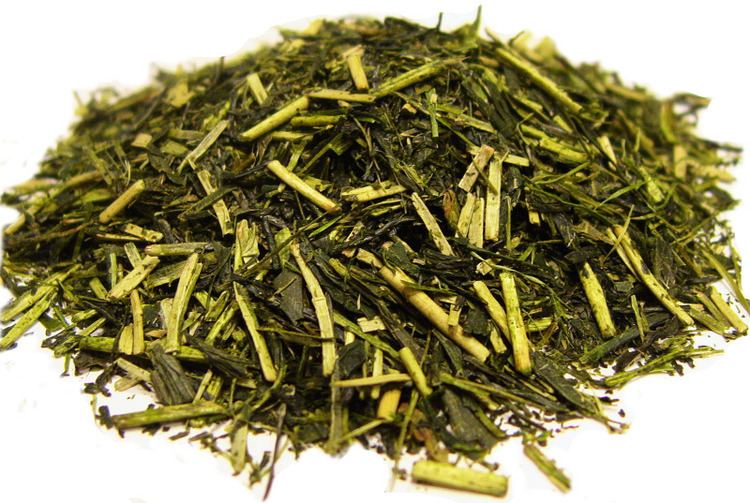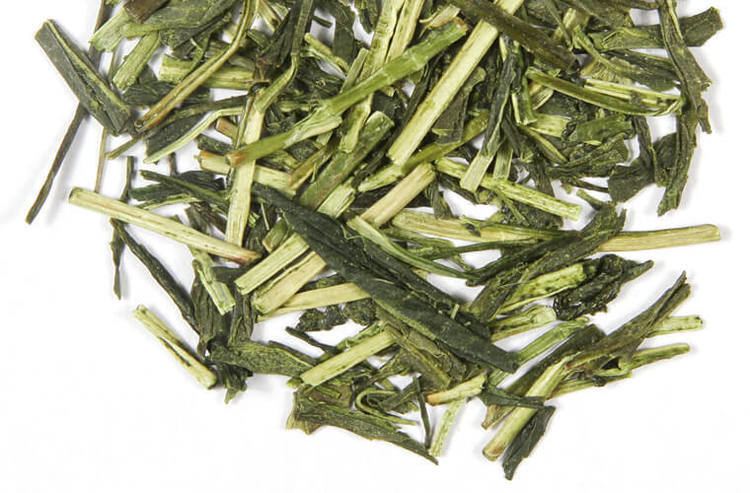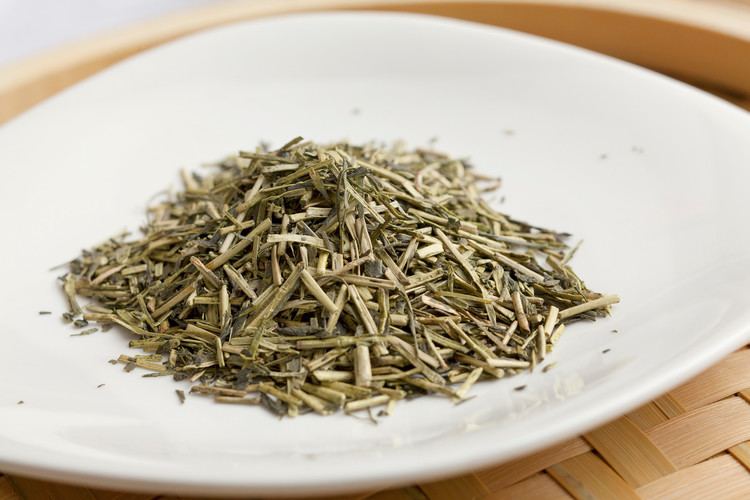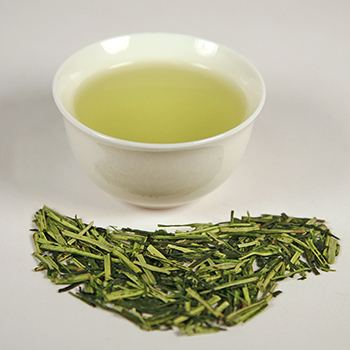Temperature 80 °C (176 °F) | Time 40 sec to 1 min | |
 | ||
Other names Stalk Tea, Stick Tea, Twig Tea Quick description Popular in Japan. Taste between that of gyokuro and sencha, with a light flavour and a fresh green aroma. Similar Green tea, Bancha, Hojicha, Genmaicha, Sencha | ||
How to brew kukicha with obubu tea
Kukicha (茎茶), or twig tea, also known as bōcha (棒茶), is a Japanese blend made of stems, stalks, and twigs. It is available as a green tea or in more oxidised processing. Kukicha has a unique flavour and aroma among teas, due to its being composed of parts of the tea plant that are excluded from most other teas.

Regular Kukicha material comes from production of Sencha or Matcha. When coming from Gyokuro's production, it takes the name of Karigane (雁ヶ音 / かりがね) or Shiraore (白折 / しらおれ).
Kukicha has a mildly nutty, and slightly creamy sweet flavour. It is made of four sorts of stems, stalks and twigs of Camellia sinensis. For best results, kukicha is steeped in water between 70 °C (158 °F) to 80 °C (176 °F). Green varieties are best steeped for less than one minute (oversteeping or steeping too hot, as with all green teas, will result in a bitter, unsavoury brew).

It is common to steep kukicha for three or four infusions.
Kukicha is one of the preferred teas of the macrobiotic diet.
Kukicha can be added to juice to make a children's drink.
Kukicha is unique in that it is naturally very low in caffeine without any industrial decaffeination.


